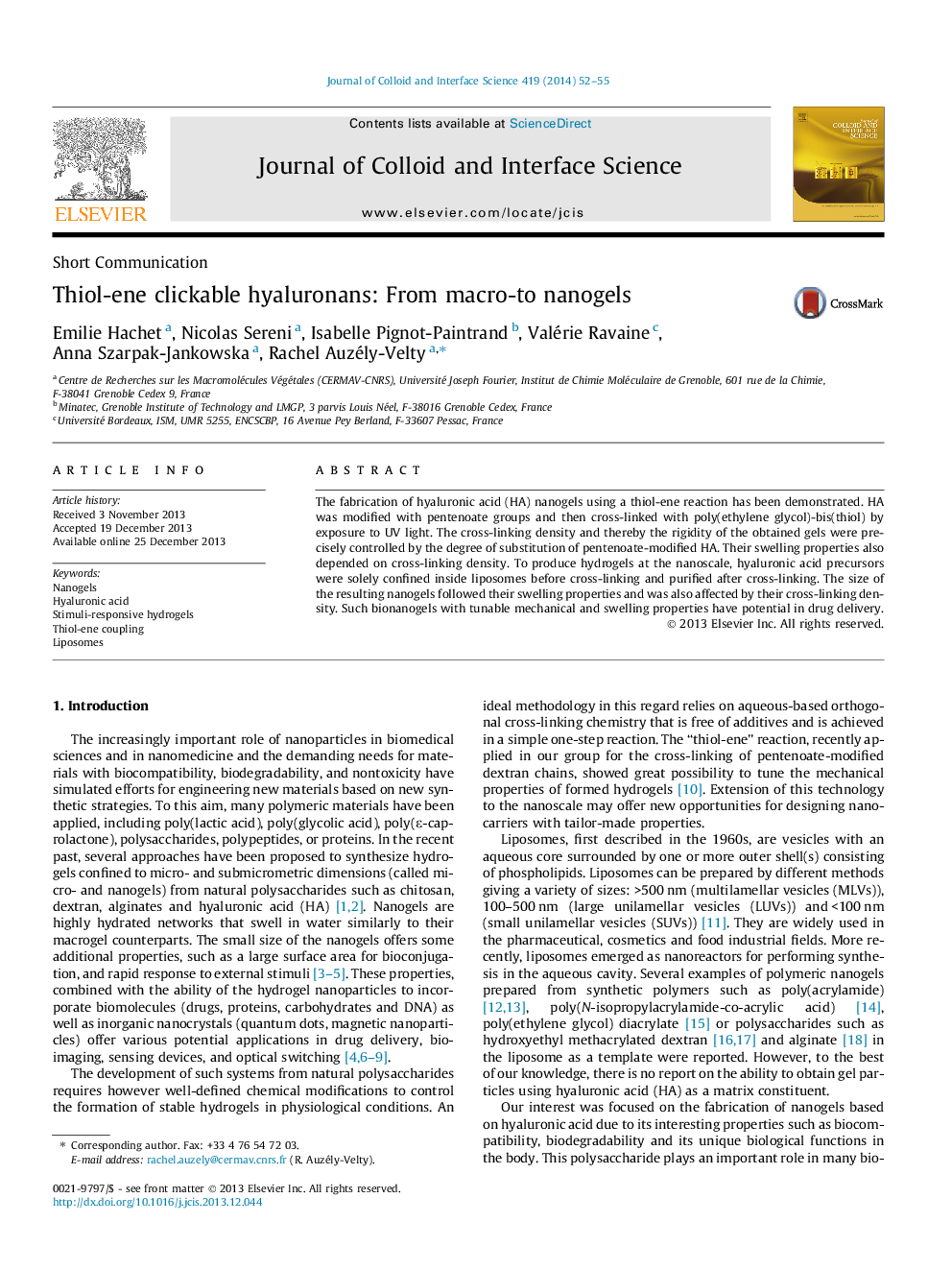| Article ID | Journal | Published Year | Pages | File Type |
|---|---|---|---|---|
| 607370 | Journal of Colloid and Interface Science | 2014 | 4 Pages |
•The fabrication of hyaluronan-based nanogels in liposome nanoreactors is presented.•Pentenoate-modified hyaluronan is crosslinked by poly(ethylene glycol)-bis(thiol).•Crosslinking density is controlled by the degree of substitution of hyaluronan.
The fabrication of hyaluronic acid (HA) nanogels using a thiol-ene reaction has been demonstrated. HA was modified with pentenoate groups and then cross-linked with poly(ethylene glycol)-bis(thiol) by exposure to UV light. The cross-linking density and thereby the rigidity of the obtained gels were precisely controlled by the degree of substitution of pentenoate-modified HA. Their swelling properties also depended on cross-linking density. To produce hydrogels at the nanoscale, hyaluronic acid precursors were solely confined inside liposomes before cross-linking and purified after cross-linking. The size of the resulting nanogels followed their swelling properties and was also affected by their cross-linking density. Such bionanogels with tunable mechanical and swelling properties have potential in drug delivery.
Graphical abstractFigure optionsDownload full-size imageDownload high-quality image (153 K)Download as PowerPoint slide
